Abstract
A computerized simulation model developed to evaluate the potential impact of primary and secondary prevention is discussed from methodologic perspectives. In the simulation model, named CANSAVE (Cancer Strategy Analysis and Validation of Effect), the natural history of cancer was modeled as a Markovian stochastic process from cancer-free state to death. The lung cancer death rate among Japanese males was projected for 50 years to the year 2041. The simulation showed that the age-adjusted death rate would increase and reach a peak of 166 per 100,000 in 1989 and then decrease to 148 in 2003. It then shows a tendency to increase again, up to 255 in 2028. This change may be attributed to a lower smoking initiation rate among those born in the 1930s. Promotion of mass screening programs exhibits a more prompt effect than antismoking efforts, but the reduction in annual deaths is expected to be only 11%, even if a 100% participation is realized by the year 2000. The reduction in smoking initiation rate, on the other hand, begins to show a visible effect very slowly. It was predicted that a 1% annual reduction in smoking initiation rate would result in a 20% decrease in the number of deaths in 2041. The smoking cessation program is in the middle with regard to promptness. The predicted reductions in lung cancer deaths in 2041 were 13, 47, and 66%, respectively, when the annual smoking cessation rate was increased from 0.46% (present status) to 1, 3, and 5%. The combined application of all three preventive measures seems essential to realize the most effective reduction in lung cancer deaths.
Full text
PDF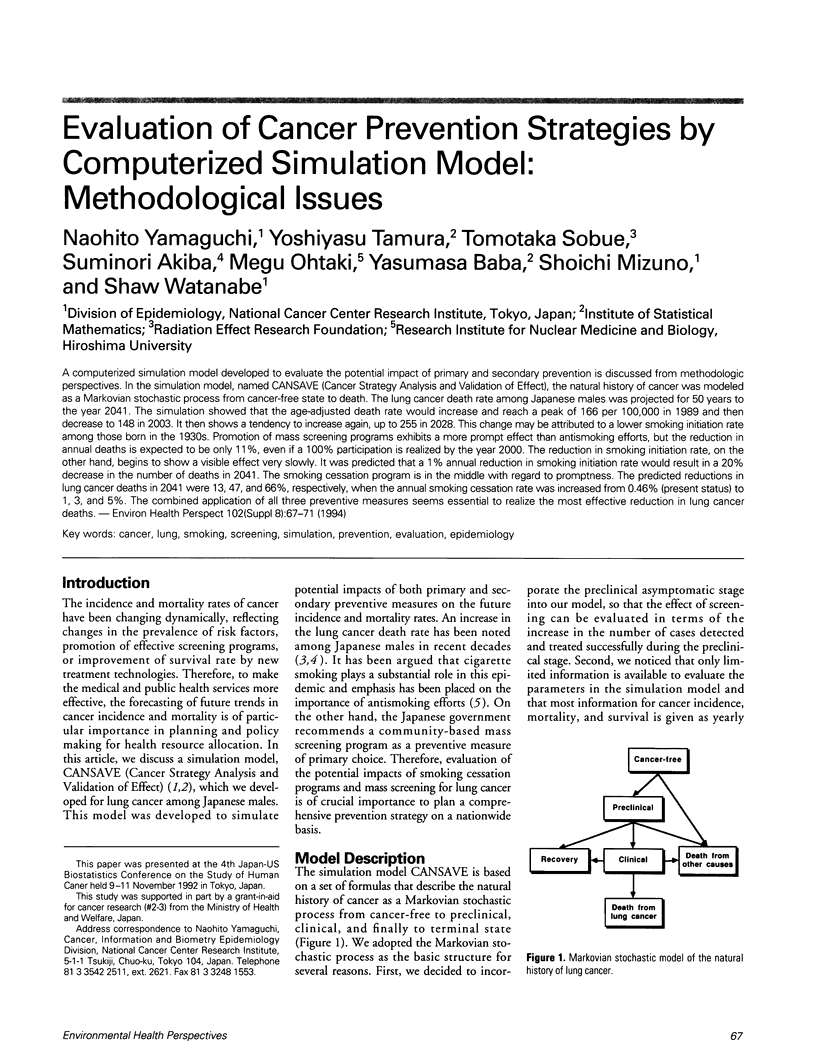
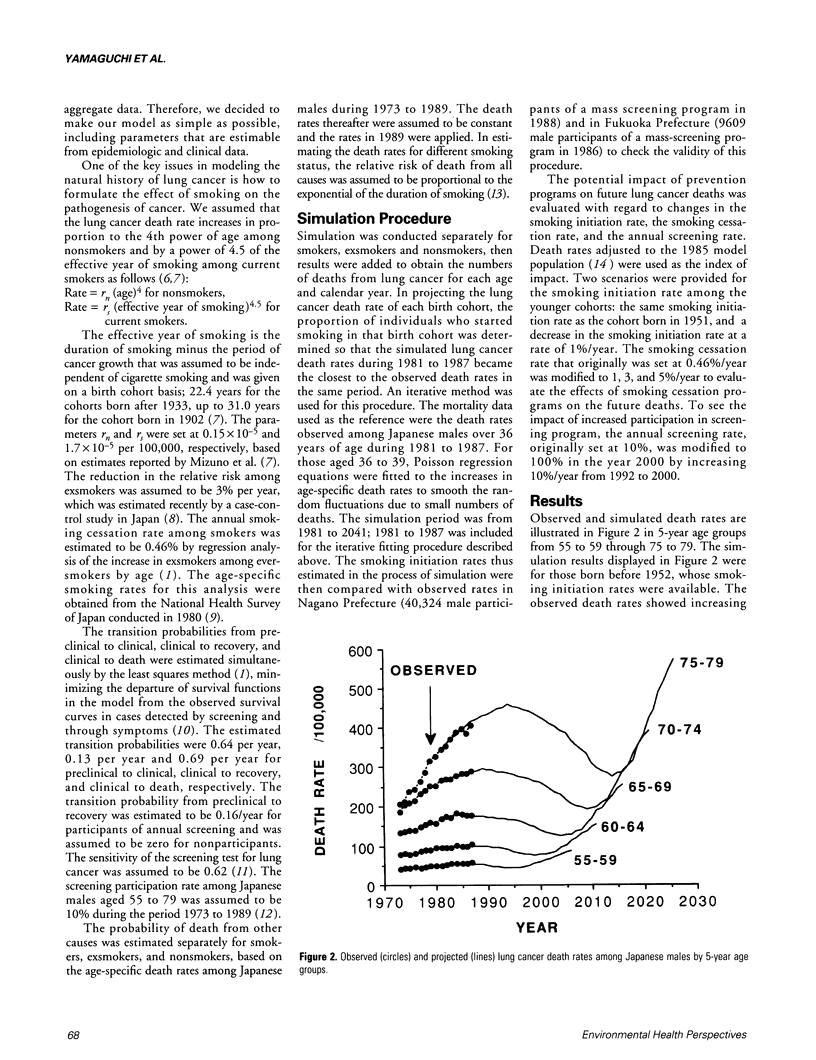
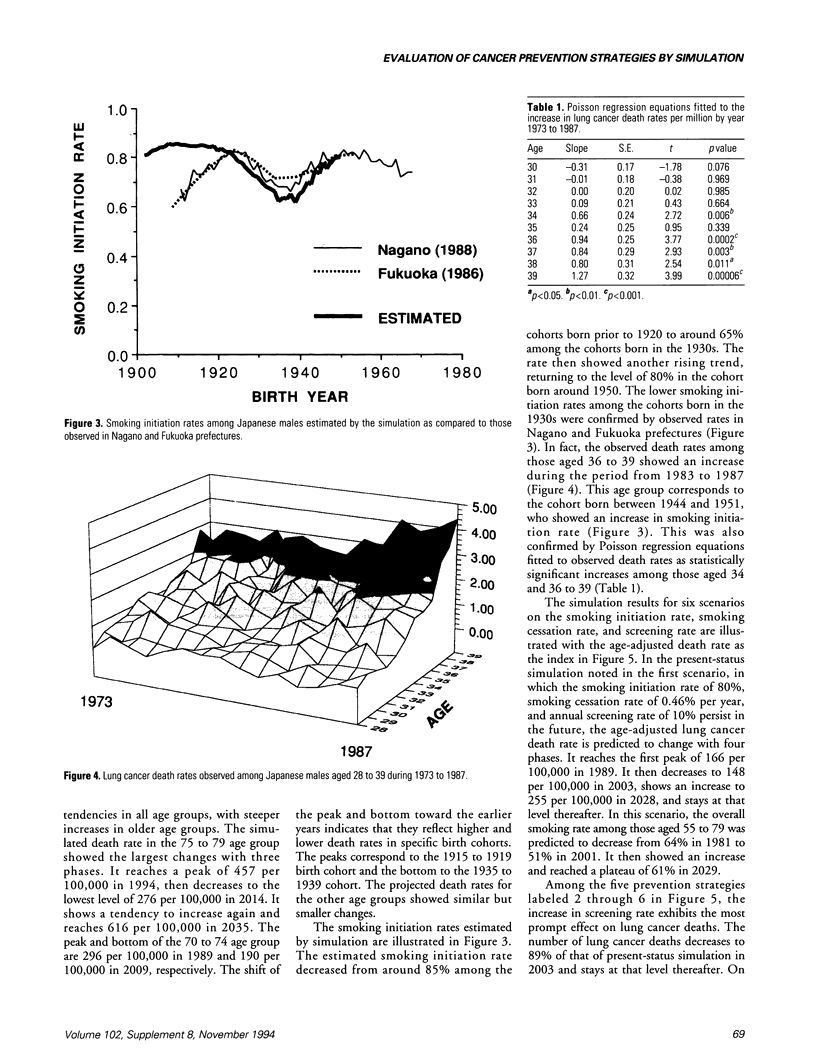
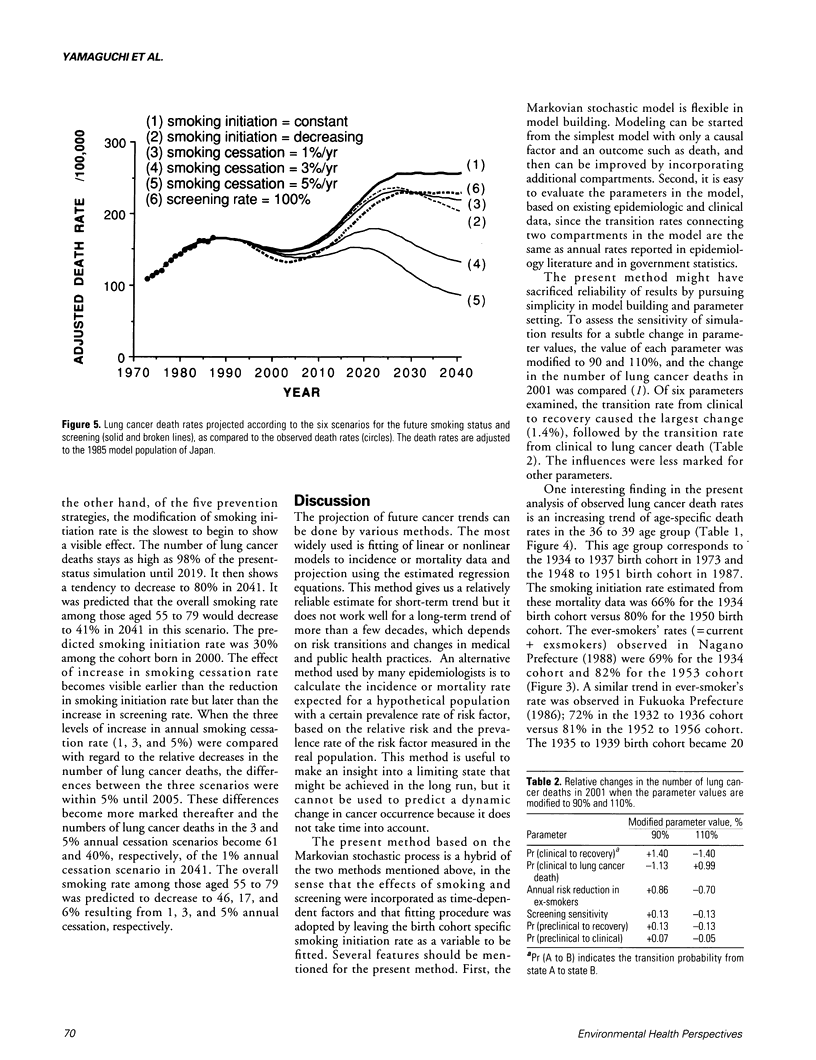
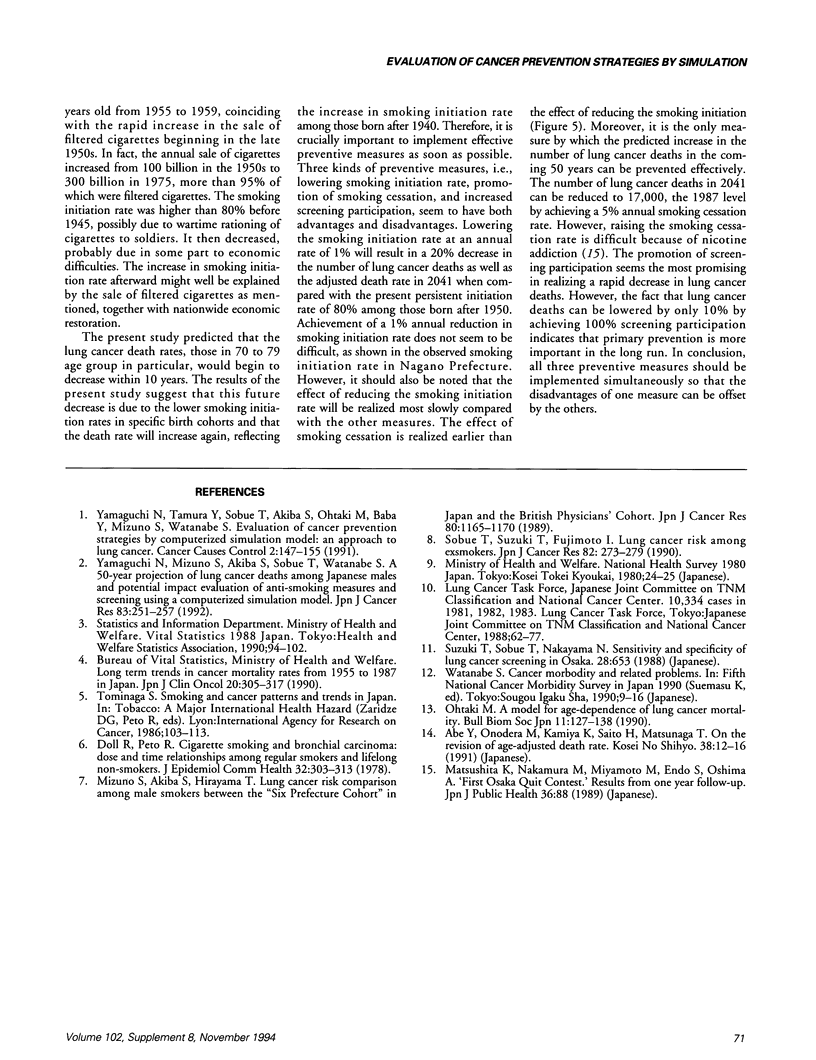
Selected References
These references are in PubMed. This may not be the complete list of references from this article.
- Doll R., Peto R. Cigarette smoking and bronchial carcinoma: dose and time relationships among regular smokers and lifelong non-smokers. J Epidemiol Community Health. 1978 Dec;32(4):303–313. doi: 10.1136/jech.32.4.303. [DOI] [PMC free article] [PubMed] [Google Scholar]
- Mizuno S., Akiba S., Hirayama T. Lung cancer risk comparison among male smokers between the "six-prefecture cohort" in Japan and the British physicians' cohort. Jpn J Cancer Res. 1989 Dec;80(12):1165–1170. doi: 10.1111/j.1349-7006.1989.tb01649.x. [DOI] [PMC free article] [PubMed] [Google Scholar]
- Sobue T., Suzuki T., Fujimoto I., Matsuda M., Doi O., Mori T., Furuse K., Fukuoka M., Yasumitsu T., Kuwahara O. Lung cancer risk among exsmokers. Jpn J Cancer Res. 1991 Mar;82(3):273–279. doi: 10.1111/j.1349-7006.1991.tb01842.x. [DOI] [PMC free article] [PubMed] [Google Scholar]
- Yamaguchi N., Mizuno S., Akiba S., Sobue T., Watanabe S. A 50-year projection of lung cancer deaths among Japanese males and potential impact evaluation of anti-smoking measures and screening using a computerized simulation model. Jpn J Cancer Res. 1992 Mar;83(3):251–257. doi: 10.1111/j.1349-7006.1992.tb00096.x. [DOI] [PMC free article] [PubMed] [Google Scholar]
- Yamaguchi N., Tamura Y., Sobue T., Akiba S., Ohtaki M., Baba Y., Mizuno S., Watanabe S. Evaluation of cancer prevention strategies by computerized simulation model: an approach to lung cancer. Cancer Causes Control. 1991 May;2(3):147–155. doi: 10.1007/BF00056207. [DOI] [PubMed] [Google Scholar]


